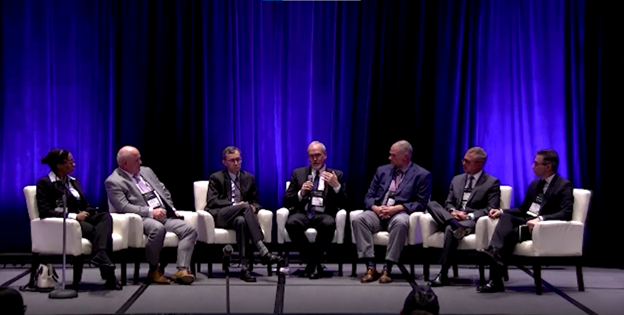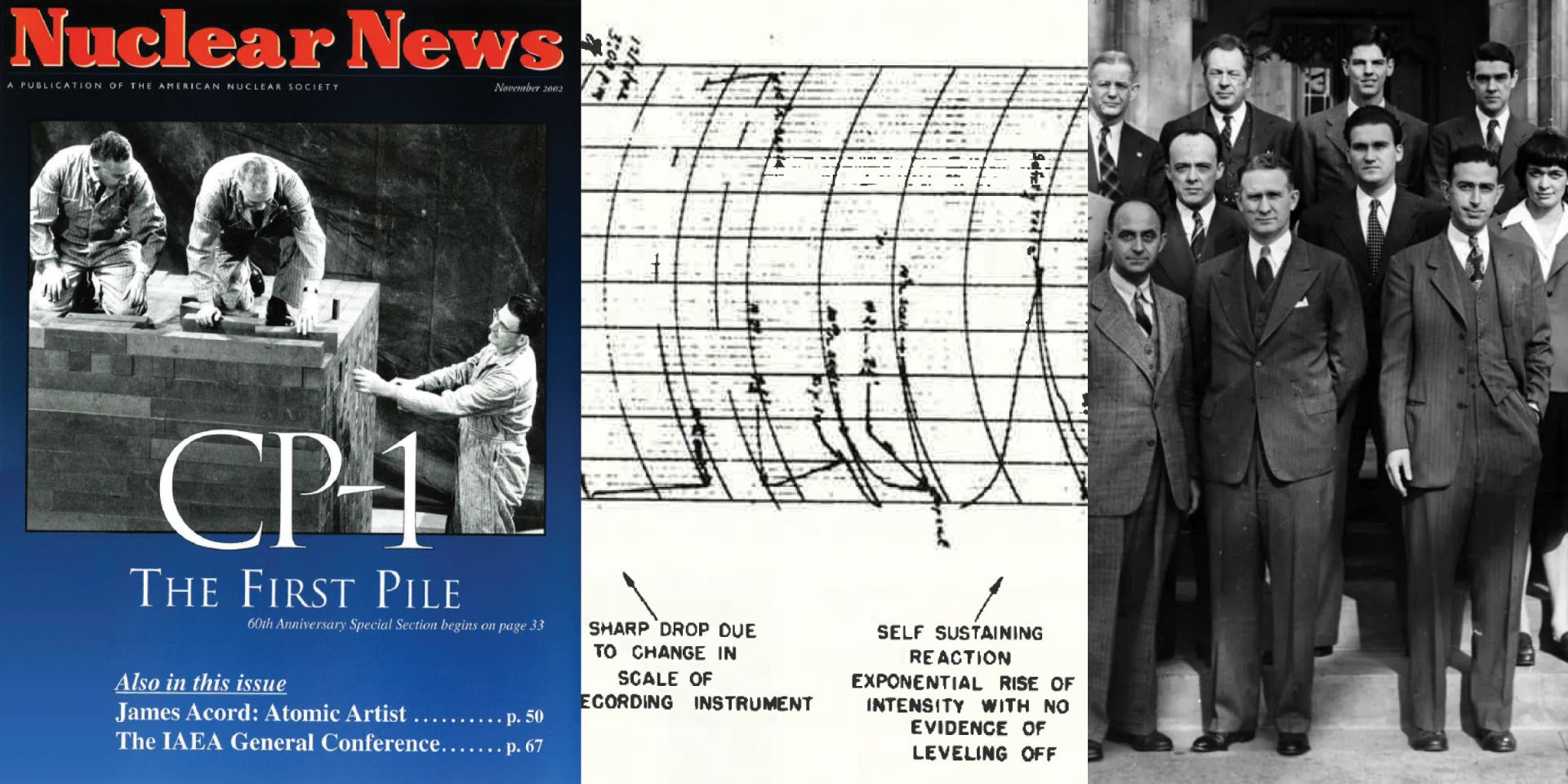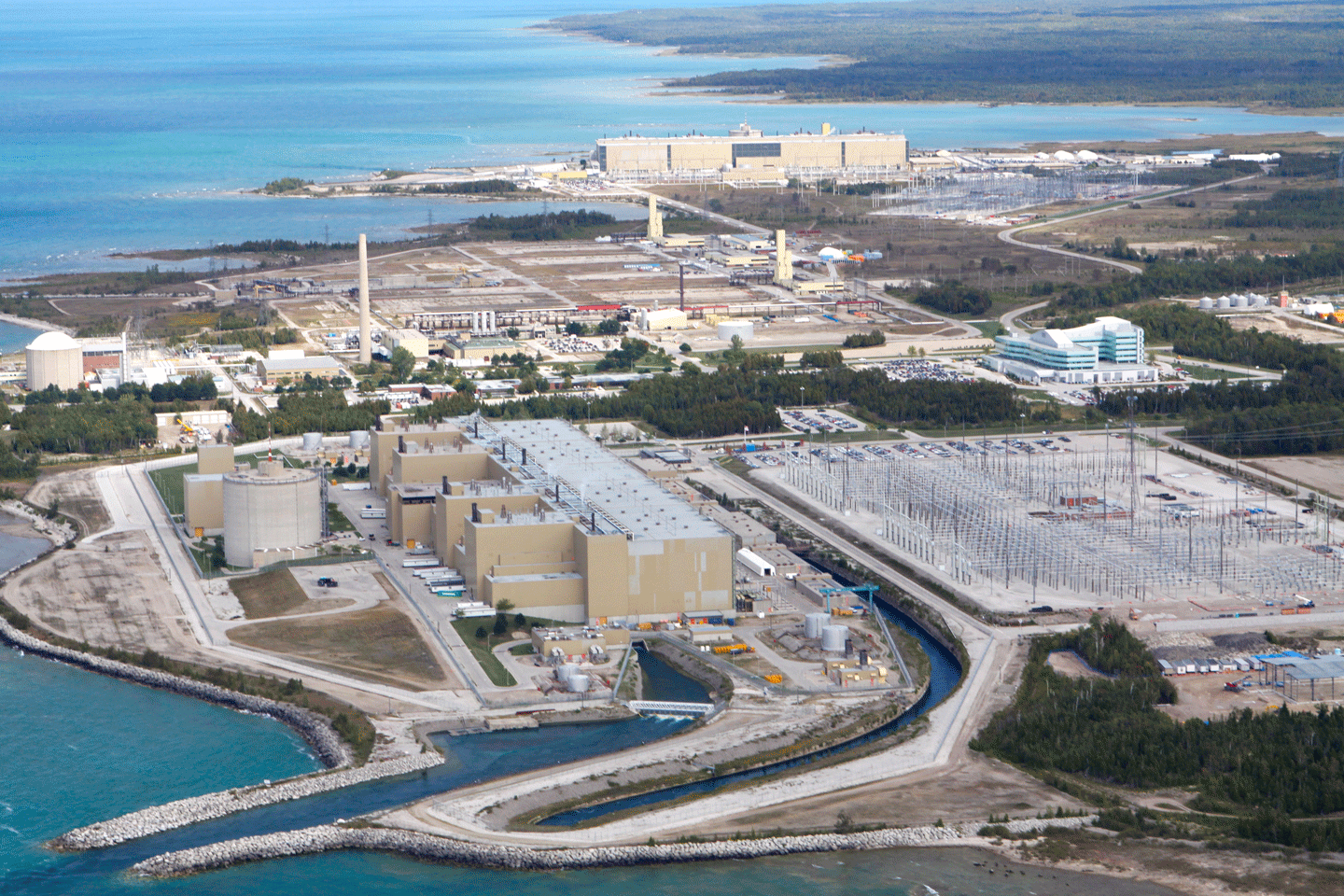Westinghouse’s Kirsty Armer and Studsvik’s Mikael Karlsson sign a technology license agreement to develop a metals recycling and treatment facility at the Westinghouse Springfields site in Lancashire, U.K. (Photo: Westinghouse)
Westinghouse Electric Company has announced the signing of a long-term technology license agreement with Swedish engineering services firm Studsvik to develop a metals recycling and treatment facility at Westinghouse’s Springfields site.
Located near Preston, Lancashire, in northwestern England, Springfields is the United Kingdom’s only site for nuclear fuel manufacturing, supplying all its advanced gas-cooled reactor fuel. According to Westinghouse, Springfields fuel is responsible for about 32 percent of Britain’s low-carbon electricity generation. In addition, the site exports other nuclear fuel products to customers around the globe.
December 2, 2022, 3:03PMNuclear NewsBrian Dassatti, Kamila Blain, and Jenn Sinkiewicz Teledyne FLIR PackBot® conducts visual inspections in a hazardous area.
Mobile unmanned systems, also known as MUS, encompass a range of robotic devices, including drones, ground vehicles, crawlers, and submersibles. They are used for a wide range of industrial and defense applications to automate operations and assist humans or completely remove human workers from hazardous conditions. Robotics are ubiquitous in industrial manufacturing. Military robots are routinely employed in combat support applications, such as reconnaissance, inspection, explosive ordnance disposal, and transportation. Drones are used in many industries for security and monitoring, to conduct aerial inspections or surveys, and to capture digital twins. Wind and solar farms use MUS technologies for day-to-day operations and maintenance.
From left: Christina Leggett (Booz Allen Hamilton), Morris Hassler (IB3 Global Solutions), Everett Redmond (Oklo), Andy Griffith (DOE-NE), Ben Jordan (Centrus), Stephen Long (GLE), and Magnus Mori (Urenco).
Whether commercial demand for high-assay low-enriched uranium (HALEU) fuel ultimately falls at the high or low end of divergent forecasts, one thing is certain: the United States is not ready to meet demand, because it currently has no domestic HALEU enrichment capacity. But conversations happening now could help build the commercial HALEU enrichment infrastructure needed to support advanced reactor deployments. At the 2022 American Nuclear Society Winter Meeting, representatives from three potential HALEU enrichers, the government, and industry met to discuss their timelines and challenges during “Got Fuel? Progress Toward Establishing a Domestic US HALEU Supply,” a November 15 executive session cosponsored by the Nuclear Nonproliferation Policy Division and the Fuel Cycle and Waste Management Division.
On December 2, 1942, a group of 49 scientists led by Enrico Fermi created the world’s first controlled, self-sustaining nuclear chain reaction underneath the University of Chicago’s Stagg Field football stadium. Some of those present went on to found Argonne National Laboratory. (Image: Argonne)
At a moment of global crisis, in a windowless squash court below the football stadium bleachers at the University of Chicago, a group of scientists changed the world forever.
On December 2, 1942, a team of researchers led by Enrico Fermi, an Italian refugee, successfully achieved the world’s first human-created, self-sustaining nuclear chain reaction. Racing to beat Nazi Germany to the creation of an atomic weapon, the team of researchers, working as part of the Manhattan Project, split uranium atoms contained within a large graphite pile—Chicago Pile-1, the first nuclear reactor ever built.
Philippine president Ferdinand R. Marcos Jr. and Vice President Harris meet in Manila on November 21. (Photo: Office of the Press Secretary, Republic of the Philippines)
During a recent weeklong trip to Southeast Asia aimed at bolstering U.S. economic and security ties in the region, Vice President Kamala Harris announced the launch of nuclear energy partnerships with Thailand and the Philippines.
Currently, neither country enjoys the benefits of nuclear power. Both rely primarily on some mix of petroleum, natural gas, and coal for their energy needs.
Tarik Choho, Westinghouse nuclear fuel president (left, foreground), and Simon-Erik Ollus, executive vice president of Fortum Generation, shake hands after signing the VVER-440 fuel contract, surrounded by Fortum and Westinghouse team members. (Photo: Westinghouse)
Westinghouse Electric Company and Finnish energy company Fortum have jointly announced the signing of a long-term partnership to develop, license, and supply VVER-440 fuel to Finland’s two-unit Loviisa nuclear power plant.
The ARE building at ORNL. (Photo: ORNL)
Experimentation on the world’s first molten salt reactor to potentially power aircraft was already underway in November 1954, being carried out by the U.S. Air Force. Oak Ridge National Laboratory was the scene for the power-dense, high-temperature reactor experiment known as the Aircraft Reactor Experiment (ARE).
The Palisades nuclear power plant, in Michigan, before it was permanently closed. (Photo: Holtec)
Pacific Gas & Electric’s two-unit Diablo Canyon plant—California’s lone operating nuclear power facility—has been deemed eligible for the initial round of funding from the Civil Nuclear Credit (CNC) Program, the Department of Energy announced yesterday.
The decision was welcomed by a nuclear community disappointed by last Friday’s news that the DOE had rejected Holtec International’s CNC application for the recently closed Palisades nuclear plant in Michigan, despite support for the effort from Gov. Gretchen Whitmer.
Energy secretary Jennifer Granholm (in purple blazer) and the ANS-sponsored delegates pose in front of the Nuclear for Climate booth at COP27.
Nuclear energy is no longer on the fringes of the international climate conversation. At COP27, the United Nations climate change conference held in Sharm el-Sheikh, Egypt, from November 6 to 18, pronuclear advocates were everywhere—and they were talking to everyone. They populated the International Atomic Energy Agency’s #Atoms4Climate pavilion, the first-ever nuclear pavilion in the 27-year history of the negotiations. Echoing such strong representation, the final statement issued by the conference used language that included nuclear power.
The Bruce Power A and B nuclear power plants. (Photo: CNSC)
Canada’s Bruce Power, operator of the eight-unit Bruce nuclear plant in Kincardine, Ontario, has announced a “made-in-Ontario solution” to the net-zero challenges faced by industries: allowing new incremental nuclear output to be accredited for an avoided emissions benefit.



















